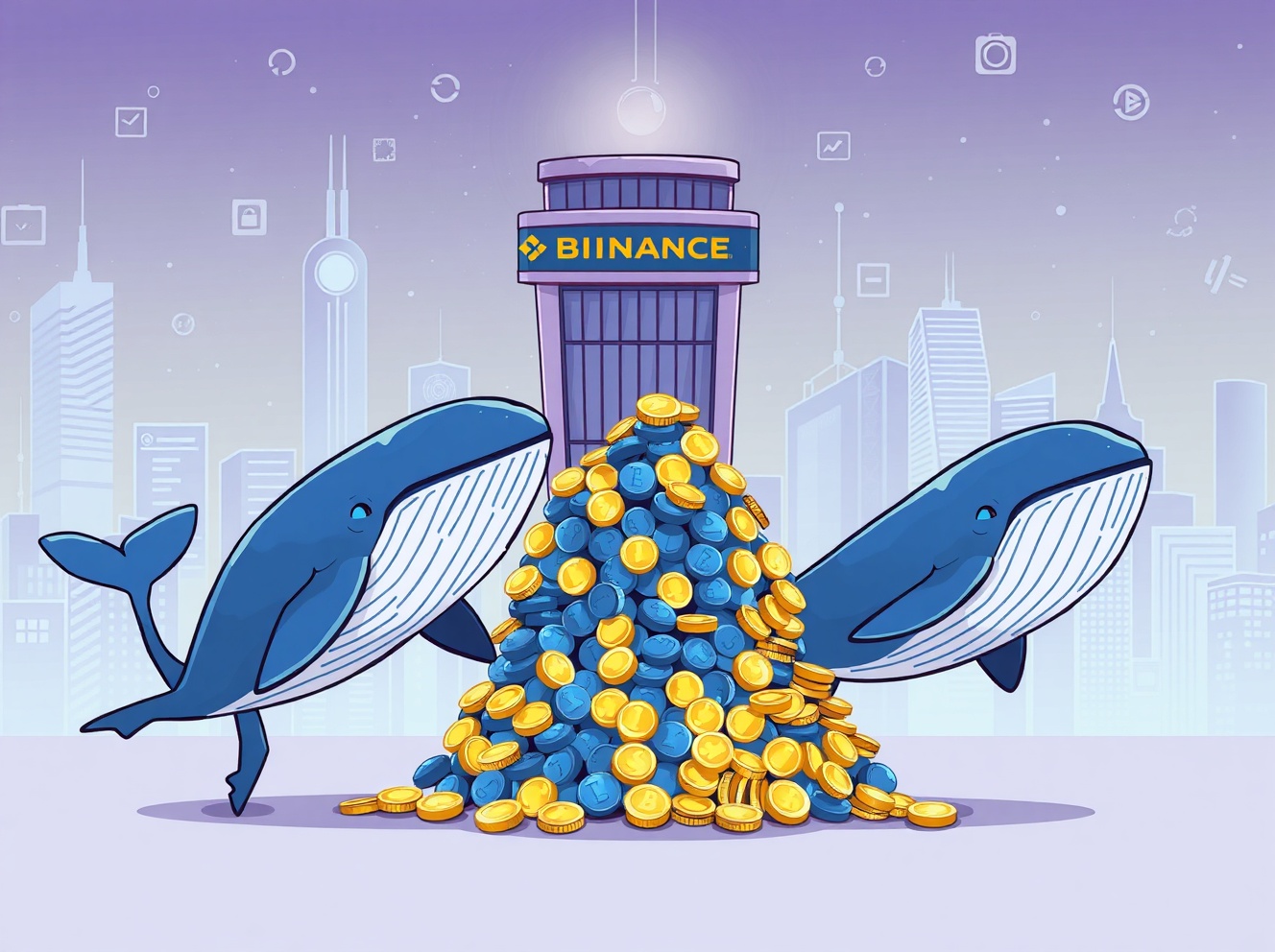BitcoinWorld

Crucial WLFI Deposit: Whales Move a Staggering $14.19M to Binance
The cryptocurrency world is always buzzing with significant movements, and a recent event involving a substantial WLFI deposit has caught the attention of many. Two prominent whale addresses recently transferred a staggering $14.19 million worth of WLFI tokens to Binance. This kind of large-scale movement often signals potential shifts in market dynamics and warrants a closer look.
What’s Behind the Recent WLFI Deposit on Binance?
According to reports, two specific whale addresses collectively deposited 64.43 million WLFI tokens onto the Binance exchange. This massive transfer, valued at approximately $14.19 million, is a notable event for the WLFI ecosystem. Interestingly, these whale addresses initially acquired their tokens from an address starting with 0xA71, precisely on the day WLFI was first listed on exchanges.
For those new to crypto, a “whale address” refers to an individual or entity holding a very large amount of a particular cryptocurrency. Their actions, such as a significant WLFI deposit, can often influence market sentiment and price action due to the sheer volume of tokens they control.
Why Does a Large WLFI Deposit by Whales Matter?
When whales make such substantial moves, especially depositing tokens to an exchange, it typically sparks questions about their intentions. A large WLFI deposit could indicate several strategic possibilities:
- Potential Selling Pressure: One common reason for moving large amounts of tokens to an exchange is to prepare for selling. If these whales decide to offload their WLFI, it could introduce significant selling pressure, potentially leading to a price correction.
- Profit-Taking: Given that these tokens were received on WLFI’s listing day, the whales might be looking to realize substantial profits from their early investment.
- Strategic Rebalancing: Whales often manage diversified portfolios. This deposit could be part of a larger strategy to rebalance their holdings, moving capital into or out of WLFI.
- Providing Liquidity: Less commonly, but still possible, they might be contributing to liquidity pools or engaging in other financial activities on the exchange.
Understanding these potential motivations is crucial for investors trying to anticipate market movements.
Navigating the Market After a Major WLFI Deposit
The immediate aftermath of a significant WLFI deposit by whales often brings a period of increased volatility and uncertainty. Investors should consider several factors when interpreting such events:
- Monitor Price Action: Keep a close eye on WLFI’s price movements and trading volume on Binance. A sudden spike in selling volume could confirm a profit-taking scenario.
- Assess Market Sentiment: How are other investors reacting? Social media and crypto news outlets can offer insights into the prevailing sentiment.
- Look for Confirmation: A single deposit, while large, doesn’t always guarantee a sell-off. Subsequent transactions, such as actual sales or further deposits, would provide clearer signals.
It’s always wise to approach such situations with caution and avoid making impulsive decisions based solely on a whale’s move. Thorough research remains paramount.
What’s Next for WLFI After This Significant Deposit?
The future trajectory of WLFI will depend heavily on how these whale addresses proceed with their deposited tokens. Will they sell? Will they hold? Or perhaps engage in other strategic maneuvers? The market will be watching closely for any further actions from these large holders.
For WLFI holders and potential investors, this event underscores the importance of staying informed about significant on-chain movements. Whale activity is a powerful indicator, and while it doesn’t dictate the entire market, it certainly adds an element of intrigue and potential impact to WLFI’s journey.
In conclusion, the recent $14.19 million WLFI deposit to Binance by two whale addresses is a significant development. It highlights the dynamic nature of the crypto market and the profound influence large holders can exert. Whether this move precedes a period of selling or is part of a broader strategy, it serves as a crucial reminder for all participants to remain vigilant and well-informed.
Frequently Asked Questions (FAQs)
Q1: What is a crypto whale?
A: A crypto whale is an individual or entity that holds a very large amount of a particular cryptocurrency, often enough to influence its market price through large transactions.
Q2: Why do whales deposit large amounts of tokens to exchanges?
A: Whales typically deposit tokens to exchanges for various reasons, including preparing to sell for profit, rebalancing their portfolio, or participating in exchange-specific activities like staking or providing liquidity.
Q3: How does a large WLFI deposit affect the market?
A: A large WLFI deposit can potentially increase selling pressure, leading to price volatility or a temporary dip if the whale decides to sell a significant portion of their holdings.
Q4: Should I be concerned if a whale makes a large deposit?
A: It’s a signal to pay attention to, but not necessarily a cause for panic. It indicates potential market movement. Always conduct your own research and consider your investment strategy before reacting.
Q5: What is WLFI?
A: WLFI refers to the native token of a specific blockchain project. Its value and utility are tied to that project’s ecosystem and adoption.
Did you find this analysis helpful? Share this article with your network to help others understand the impact of major crypto whale movements!
To learn more about the latest crypto market trends, explore our article on key developments shaping WLFI price action.
This post Crucial WLFI Deposit: Whales Move a Staggering $14.19M to Binance first appeared on BitcoinWorld.


